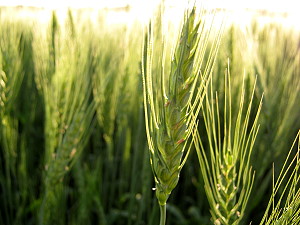 Crop Report Prepared by: Manitoba Agriculture, Food and Rural Initiatives GO Teams & Crops Knowledge Centre
Crop Report Prepared by: Manitoba Agriculture, Food and Rural Initiatives GO Teams & Crops Knowledge Centre
August 20, 2012 |
Northwest Region
Seasonal warm days, cool night temperatures and favourable harvest conditions were general through most of the Northwest Region. On Wednesday, however, an unstable weather system interrupted harvest with occasional thunderstorms and rain showers with precipitation of 10 to 20 mm occurring through the Grandview to Ste. Rose sector. Higher amounts of rain up to 35 mm were reported south of the Grandview area.
The winter wheat, fall rye and pea harvest is nearly complete. Yield of winter wheat is variable from 25 bu/acre to over 75 bu/acre, averaging around the 65 to 70 bu/acre range with good quality.
Spring wheat harvest is 30% complete, primarily in the southern areas of the region. Yields of red spring wheat are also variable ranging from 35 to 55 bu/acre. Majority of crop harvested to date is grading a #2 with very little fusarium, wheat midge damage or ergot.
The majority of canola is maturing with swathing reaching 20 to 50% completion; combining of canola is in a very early stage. In all of the Northwest, as canola fields are opened up; yield expectations of canola continue to decline further due to significant negative impacts of aster yellows and increased evidence of sclerotinia. Harvest operations are less advanced in the Roblin area and the northern areas from Ethelbert to The Pas. Other crops in the Dauphin/Ste. Rose area including silage corn, hemp and soybeans are advancing to later growth stages under favourable conditions and show good yield potentials.
The generally favourable weather and field conditions allowed greenfeed and native haying operations to continue. Greenfeed and native hay yields are average overall but are lower in those areas that had excess moisture issues. Second cut forages are nearing completion with average quality and yields. With the wheat harvest well underway, good quantities of straw are being baled and collected in good condition. Area supplies of forage are expected to be adequate overall; however, some localized shortages are expected.
